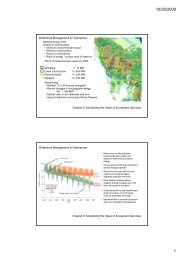RAINFOR GEM Intensive Plots Manual (pdf) - University of Oxford
RAINFOR GEM Intensive Plots Manual (pdf) - University of Oxford
RAINFOR GEM Intensive Plots Manual (pdf) - University of Oxford
- No tags were found...
Create successful ePaper yourself
Turn your PDF publications into a flip-book with our unique Google optimized e-Paper software.
all <strong>of</strong> the large, marked wood pieces which remain on the transect. The values <strong>of</strong> both the mass <strong>of</strong> the smallpieces in bags, and diameter <strong>of</strong> the individual large pieces should be stored in a datasheet.Decomposition Level (following Harmon et al.1995 80 as in §3.4)1 (little decay: bark cover extensive and leavesand fine twigs present)2 (logs and snags relatively undecayed but withno leaves and few fine twigs and bark has startedto fall <strong>of</strong>f)3 (logs and snags with no bark and only a fewbranch stubs remaining; although in this class thesapwood is decaying, the heartwood is relativelyundecayed, and branch stubs do not move whenpushed or pulled)4 (no branches or bark cover; outer portions <strong>of</strong>the wood are <strong>of</strong>ten casehardened and the innerwood is decomposing)5 (logs are elliptical in cross-section (indicative<strong>of</strong> advanced decay) and <strong>of</strong>ten the wood isscattered across the soil surfac)LeavespresentFinetwigspresentIntactbarkFirmwoodS<strong>of</strong>twoodyes yes yes yes no nono no yes yes no nono no no yes no nono no no no yes nono no no no no yesVerys<strong>of</strong>twoodTo derive estimates <strong>of</strong> coarse woody debris dry weight, the additional weight <strong>of</strong> the canvas bags and the waterwithin the wood (for the small wood pieces) and wood density (for the larger pieces) must be subtracted.Therefore, back at the lab weigh (1) the canvas bags (should be approx. 50 g), and (2) each individual woodpiece saved (5 decomposition categories, 30 per category, 5 * 30 = 150 total) before and after drying at around80°C to constant mass. Then place each wood piece into a graduated water flask half full with water and record(3) the volume <strong>of</strong> water displaced (remember 1 ml = 1 cm 3 ). Pieces from decomposition categories 4 and 5should be wrapped in clingfilm before immersion to avoid saturation <strong>of</strong> airspaces within the wood (whichwould then lead to an underestimation <strong>of</strong> wood volume). These measurements should also be noted in the samedatasheet, as wood mass and diameter.Wood density may be calculated as wood dry mass divided by volume. The volume <strong>of</strong> the larger woodpieces which could not be removed from the transects may be estimated from the equation for a cylinder:3.1416 * (diameter/2) 2 * length. Mean wood density for the appropriate decomposition category, multiplied bythe piece volume, gives an estimate <strong>of</strong> dry mass <strong>of</strong> each large wood piece. Total coarse litter mass per unitground area may be calculated as the sum <strong>of</strong> all the weighed bags (minus the weight <strong>of</strong> water in the wood andthe bags themselves) and the larger wood pieces which could not be removed from the transects.Diameter and length measurements <strong>of</strong> each wood piece may be used to calculate surface area with: (2 *3.1416 * ((diameter/2) 2 )) + (2 * 3.1416 * (diameter/2) * length). The sum <strong>of</strong> the surface areas <strong>of</strong> the piecesencountered gives an estimate <strong>of</strong> coarse litter surface area per unit ground area.Coarse litter should be collected every two months from within all four transects. If there is a reasonably highproduction <strong>of</strong> dead branches, it is most efficient to collect the representative wood pieces required for §3.4 aspart <strong>of</strong> the survey described here.80 n.b. these categories differ slightly from those in Baker & Chao (2011).65





